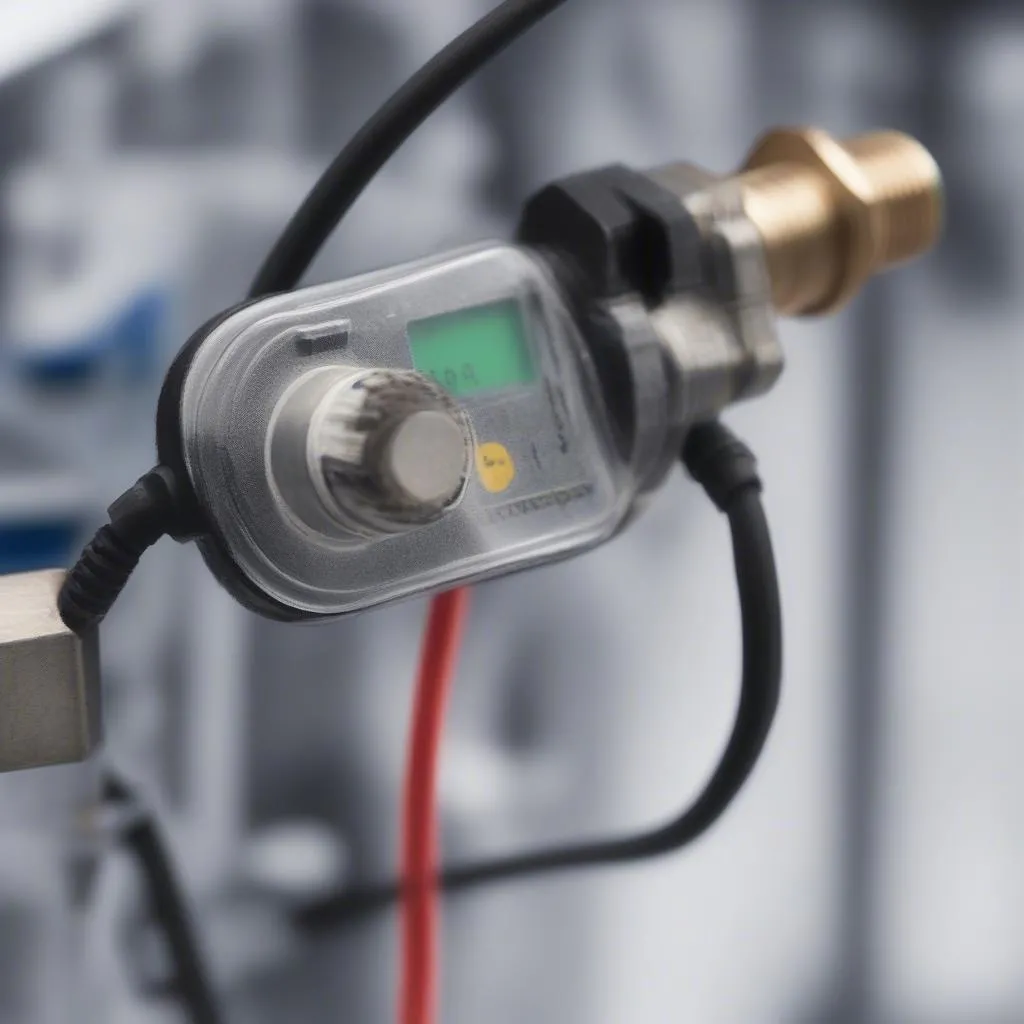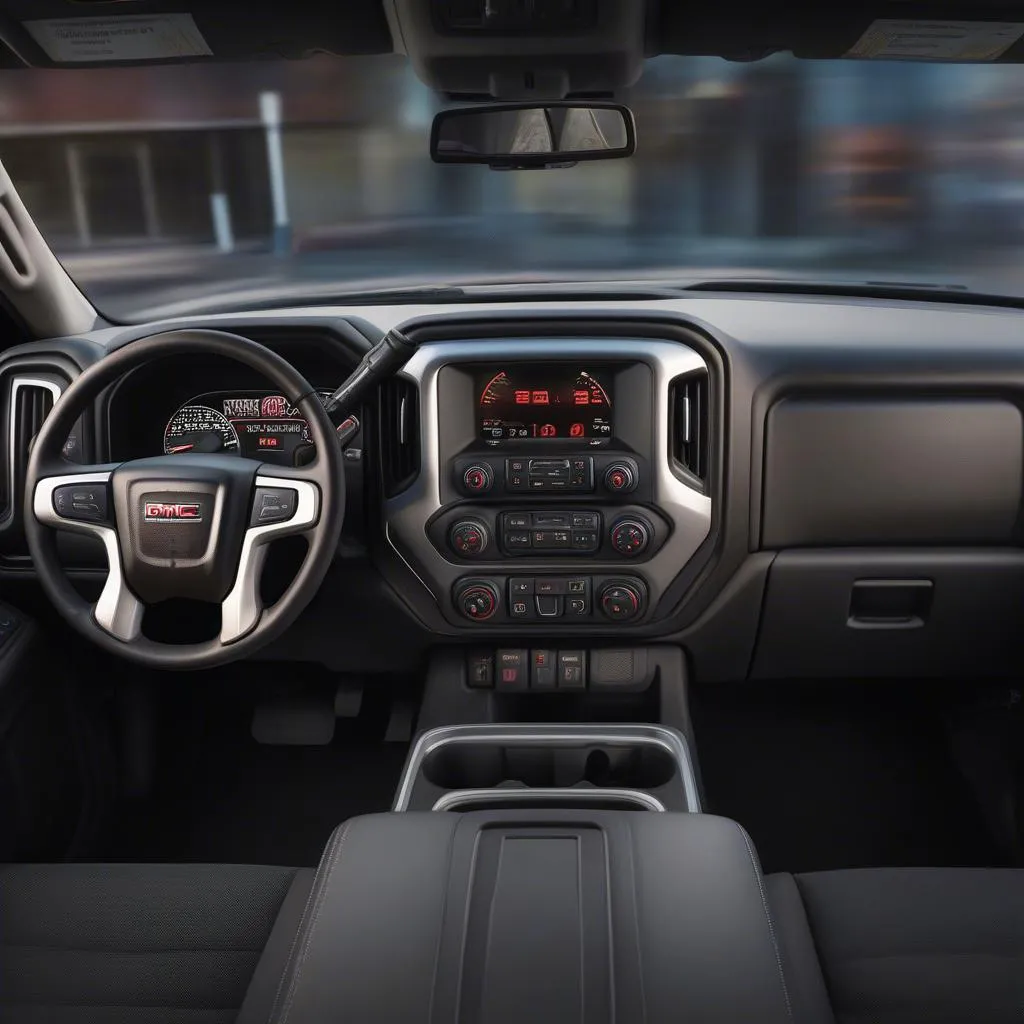Have you ever been cruising down the road, the open highway stretching before you, when suddenly your trusty 2005 GMC Sierra starts acting up? The check engine light blinks ominously, and a wave of dread washes over you. You pull over, pull out your trusty OBD II scanner, and boom—P0054. Now what? Don’t worry; we’ve all been there. This article will help you understand the P0054 code, what it means, and how to get your Sierra back on the road.
Understanding the P0054 Code: A Deep Dive
Before you panic, let’s decode this cryptic code. In simple terms, the P0054 code on your 2005 GMC Sierra usually indicates a problem with the heated oxygen sensor (HO2S) circuit. But let’s break it down further:
What Does a Heated Oxygen Sensor Do?
Imagine your Sierra’s engine as a living, breathing machine (which it kind of is!). The heated oxygen sensor, often located in the exhaust manifold or near the catalytic converter, acts as its lungs. It constantly monitors the oxygen content in the exhaust gases to ensure your engine is running at optimal efficiency. This data helps the engine control module (ECM) adjust the air-fuel mixture for a smooth ride and minimal emissions.
So, What Does the P0054 Code Specifically Mean?
The P0054 code specifically points to a problem with the heater circuit of Bank 1, Sensor 1, oxygen sensor. “Bank 1” refers to the side of the engine that houses cylinder #1. “Sensor 1” indicates that it’s the upstream oxygen sensor, positioned before the catalytic converter.
Why Should I Care About an Oxygen Sensor?
A malfunctioning oxygen sensor can lead to:
- Decreased Fuel Efficiency: Your Sierra might turn into a gas guzzler.
- Rough Idling and Acceleration: Say goodbye to those smooth rides.
- Increased Emissions: Not good for the environment or your conscience.
- Damage to the Catalytic Converter: A costly repair you definitely want to avoid.
Common Causes of the P0054 Code
Now that you understand the “why,” let’s delve into the “how.” Here are some common culprits behind that pesky P0054 code:
- Faulty Oxygen Sensor: The most likely suspect is a worn-out oxygen sensor that needs replacement.
- Damaged Wiring: Frayed, burnt, or corroded wiring in the sensor circuit can disrupt the signal.
- Blown Fuse: Check your fuse box for any blown fuses related to the HO2S circuit.
- Faulty ECM: In rare cases, the engine control module itself might be the issue.
 oxygen sensor
oxygen sensor
Troubleshooting the P0054 Code
Before rushing to the mechanic, here’s a step-by-step guide for some DIY troubleshooting:
- Inspect the Wiring: Visually inspect the wiring harness connected to the oxygen sensor for any obvious damage.
- Check the Fuse: Locate the fuse for the HO2S circuit in your owner’s manual and check if it’s blown.
- Test the Sensor: If you have a multimeter, you can test the resistance of the oxygen sensor heater circuit.
If you’re not comfortable with electrical work, it’s always best to consult a qualified mechanic, especially if the issue lies with the ECM.
Frequently Asked Questions: P0054 Code
Q: Can I still drive my Sierra with a P0054 code?
While you might be able to drive for a short distance, it’s not recommended. Ignoring the code can lead to more severe and expensive problems down the road.
Q: How much does it cost to fix a P0054 code?
The cost can vary greatly depending on the underlying cause. A simple oxygen sensor replacement might cost a few hundred dollars, while a faulty ECM can set you back over a thousand.
Q: How often should I replace my oxygen sensors?
Oxygen sensors typically last between 60,000 to 90,000 miles. However, it’s always a good idea to consult your owner’s manual for the recommended maintenance schedule for your specific Sierra model.
Similar Issues You Might Encounter
- P0030: HO2S Heater Control Circuit (Bank 1, Sensor 1)
- P0134: O2 Sensor Circuit No Activity Detected (Bank 1, Sensor 1)
- P0135: O2 Sensor Heater Circuit Malfunction (Bank 1, Sensor 1)
 dashboard
dashboard
Need More Help?
Experiencing car trouble can be frustrating, but understanding what those cryptic codes mean is half the battle won. Remember, regular maintenance and addressing issues promptly can save you time, money, and unnecessary headaches in the long run.
For more information and assistance with automotive diagnostics tools, feel free to contact us via WhatsApp at +84767531508. Our team of automotive experts is available 24/7 to help you get back on the road!